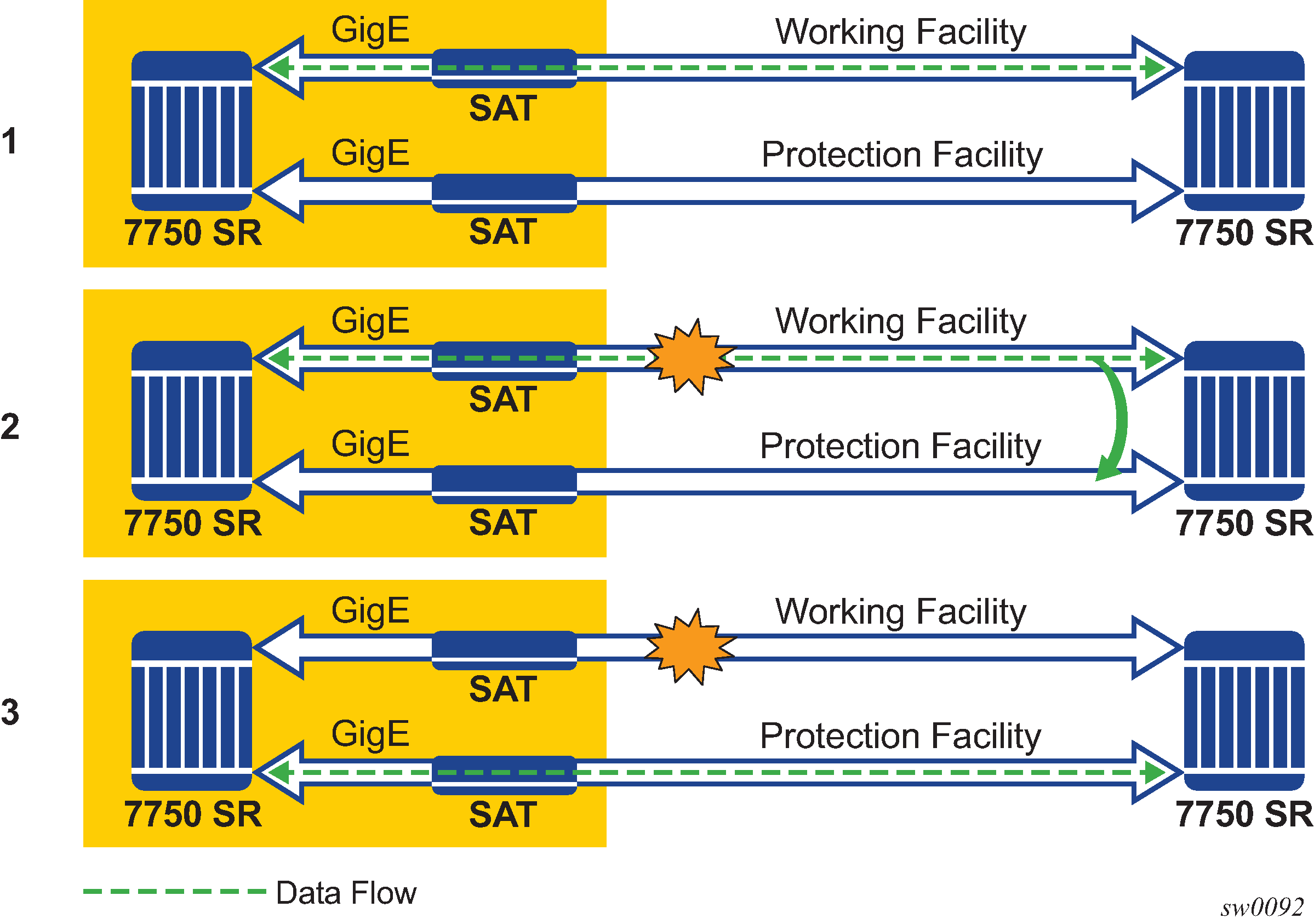APS is designed to protect SONET/SDH equipment from linear unidirectional or bidirectional failures. The Network Elements (NEs) in a SONET/SDH network constantly monitor the health of the network. When a failure is detected, the network proceeds through a coordinated pre-defined sequence of steps to transfer (or switchover) live traffic to the backup facility (protection facility). This happens very quickly to minimize lost traffic. Traffic remains on the protection facility until the primary facility (working facility) fault is cleared, at which time the traffic may optionally be reverted to the working facility. An example is shown in Figure 1.

Note that ‟facility” in the router’s context refers to the physical line (including intermediate transport/switching equipment) and directly attached line terminating hardware (SFP module, MDA and IOM). ‟Circuit” is also a term used for a link/facility (working-circuit).
A 1+1 APS group contains two circuits.
APS is configured on a port by port basis. If all ports on an MDA or IOM need to be protected then each port on the MDA or IOM must be individually added into an APS group.
Working and protection circuits can be connected to a variety of types of network elements (ADMs, DACSes, ATM switches, routers) and serve as an access or network port providing one or more services or network interfaces to the router. APS-protected SONET/SDH ports may be further channelized, and may contain bundled channels MLPPP or IMA Bundle Protection Groups). The ports may be one of a variety of encapsulation types as supported by the MDA including PPP, ATM, FR and more. For information about MDAs, port types, switching modes, bundles and encapsulations supported with APS, see APS applicability, restrictions and interactions.
This section discusses the different APS architectures and their implementations.